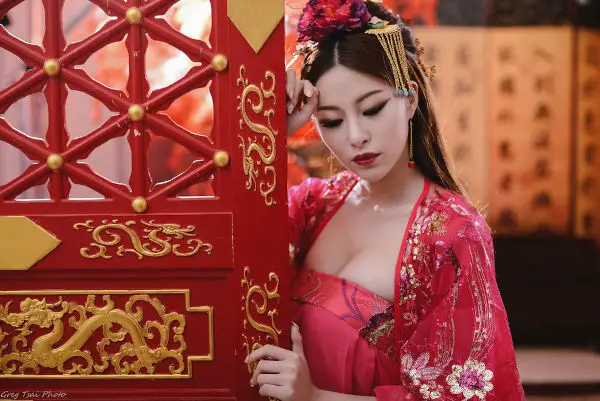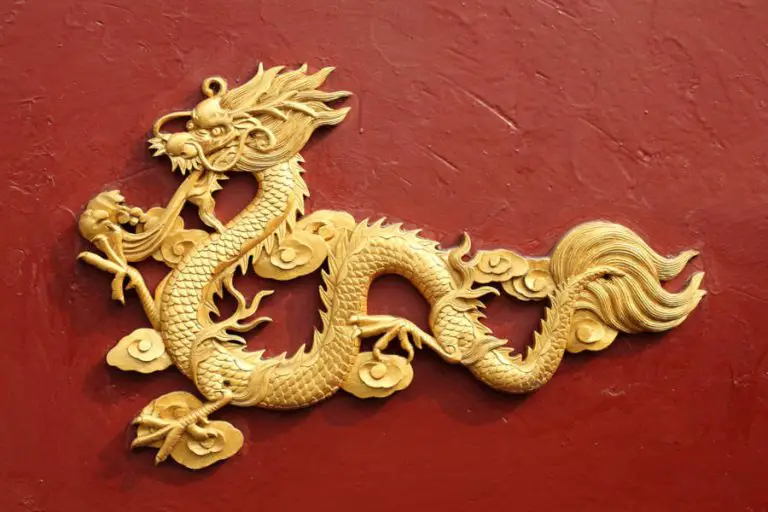Before China adopted the communist ideology back in 1949, it was an imperial monarchy for centuries, and throughout imperial Chinese history, concubinage was still one of the accepted norms, and concubines still played a large part in pre-modern Chinese culture.
Concubines are, in a nutshell, mistresses, and in ancient China, polygamy was considered normal, especially for the rich. While not all Chinese people can have concubines, it was the norm for any successful man to at least have one concubine in their household. However, as with many other things in ancient China, there was an unbreakable hierarchy: the status of the concubines was never be higher than any official wives.
In the royal family, concubines are only recognized as sexual partners of the king and are expected to bear children, but will never ascend the throne as an Empress as long as the Empress still lives.
Exploring the concept of Chinese concubinage can be a complex and arduous work with its long history and complex hierarchical system. Thus, we’ll divide the discussion into several different points below, and let us begin with the first one.
Chinese Concubine Training
Before a lady can be accepted as a concubine in the royal family, the candidates must first pass a series of inspections and qualification tests. The requirements for each candidate can vary from one emperor to another, but obviously, all the candidates must be beautiful’ according to the emperor’s preferences. The candidates are also expected to possess a certain level of intelligence, mental stability, and discipline to pass the qualification tests.
The concubine candidates may come from any background, whether from a poor peasant family up to a merchant family or even a noble family, but typically they are recruited when they are between 13 to 16 years old. An officer will conduct the initial inspection, and the candidates that—for example—are too tall or too short will be pulled out from the training.
The candidates will then be examined thoroughly, and they will be dismissed if the results are not up to the imperial standards. They won’t only be evaluated physically, but their mannerisms, body language, and voice tone will also be considered.
Candidates that pass this evaluation stage will then receive lessons and tests for many months, ranging from improving their intellectual prowess, how to regulate temperament, and even morality and philosophy training. This training period is very rigorous, and many will fail to pass.
The last hurdle is a series of lessons and tests about many advanced topics from mathematics, Chinese literature, art, and the candidates will then be ranked according to their performance before being offered to the king.
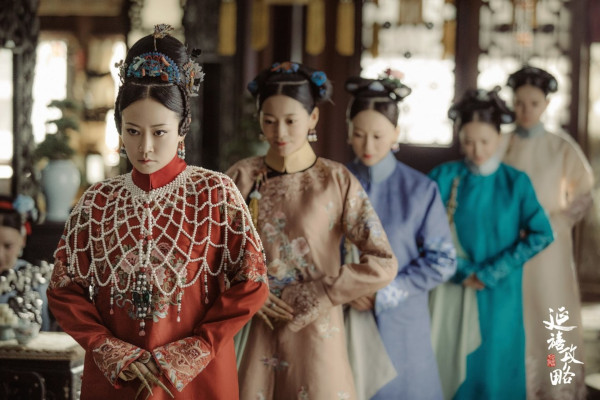
Life of a Chinese Concubine
The day-to-day life of a Chinese concubine might be very difficult to comprehend in this modern age where male-female emancipation, although still imperfect, has advanced so much compared to the times of Ancient China.
The word for “concubine” itself in Chinese is qiè, which can be literally translated into “female slave”. This shows the philosophy behind the concubinage: as an imperial concubine, your life is simply no longer your own and is considered the same as a slave.
As an imperial or royal concubine, your life belongs only to the Emperor, and a concubine can’t ever step out from the Forbidden City (or Forbidden Palace), where the ancient emperors of China lived, without any official consent from the Emperor.
Concubines’ main role is to fulfill the emperor’s desire (especially in bed) and they are forbidden to have sexual relationships with anyone else, the violation of such rule is punishable by death. In day-to-day routines, they perform ladylike works like sewing clothing and embroidery. Also, a lower-ranked concubine must also attend to higher-rank concubines’ needs. Some might need to directly serve and tend to the Empress’s needs.
However, it’s worth noting that throughout history, there have been several occurrences of concubines who ended up controlling the ruling emperor from behind the screen, gaining power for themselves.
Concubines are allowed to develop their ladylike hobbies like playing musical instruments like Guqin and Pipa, read literature, and even painting and calligraphy.
However, their main duty remains to serve the Emperor in bed, and so before the Emperor visits the imperial harem, all the concubines will be examined by the imperial doctor. Those that are deemed healthy will be groomed and hope the Emperor will choose them for that night.
There were often hundreds of concubines inside the imperial palace, so it was considered lucky to be chosen by the Emperor, especially if they could bear children and be the mother of a prince. Many of them will have no experience meeting the Emperor at all throughout their lifetimes, and so we can say they wasted their life hoping they were chosen by the emperor.
Check out our “Free Culture Library“. We have compiled some great free resources, about Chinese culture, for your research.
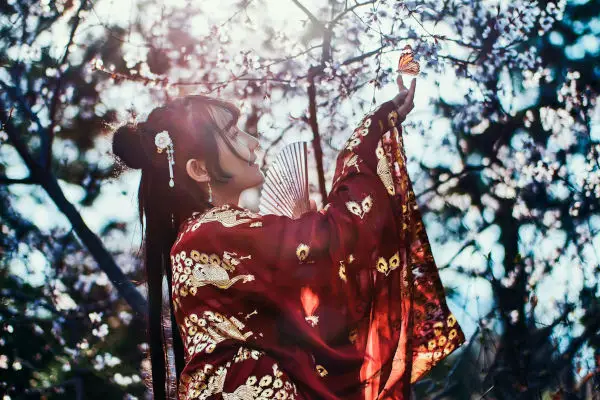
Chinese Concubine Ranks
As briefly discussed above, concubines have their own hierarchy inside the Forbidden Palace. The hierarchy remained the same throughout history, although with each Emperor, the number of concubines that belonged in each rank may vary:
Empress 皇后 (Huáng hòu) and Empress Dowager
The highest position in the Imperial Harem and only one person can attain this title. The Empress is the official wife of the Emperor, and the title “Empress Dowager” is given to a mother or widow of an emperor, holding the same authority as the Empress.
An Empress and Empress Dowager are always assigned 10 maids to tend to their needs. If the Empress has a male child, then he will have the highest priority to be considered as the legitimate heir or the future emperor. For example, even if a concubine with a lower rank bore a male child first, the son of the Empress would be prioritized as the heir even if he was younger.
Imperial Noble Consort 皇贵妃 (Huáng Guì fēi )
The second-highest position after the Empress, and is also a unique rank since only one person can fill this rank. This rank is not always filled and typically is only given when the Empress needs an extra hand to handle the Harem. Sometimes, an Emperor will give this rank to a consort when the Empress title is still vacant (i.e. when the Emperor can’t yet make his choice for an official wife).
The Imperial Noble Consort is assigned 8 maids to help with her needs.
Imperial Consort 貴妃 (Guì fēi)
This rank can be filled with 2 people, holding one of the higher authorities inside the Imperial Harem. Imperial Consorts will be given 8 maids to help them on a daily basis.
Consort 妃 (Fēi )
This rank can be held by 4 concubines, and each of four actually symbolizes Gui 贵 (Noble), Xian 贤 (Virtuous), Shu 淑 (Kind/Gentle), and De 德 (Moral). Considered as a middle authority within the harem, and each has 6 maids to tend to their needs.
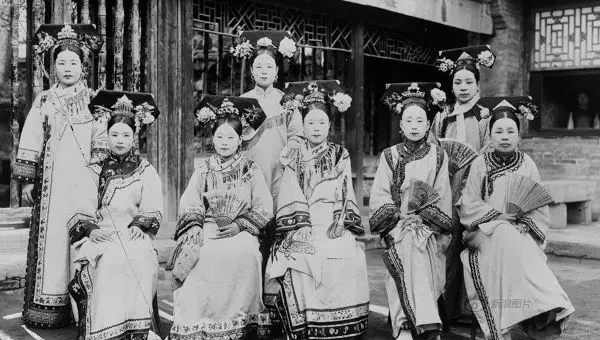
Imperial Concubines 嬪 (Pín )
Only six concubines can fill this rank, and this rank allowed them to have their own quarters, although the upper ranks will have more luxurious quarters. Also considered a middle authority and they will be assigned 6 maids to do their chores.
Noble Ladies 貴人(Guì rén)
An unlimited number of concubines can fill this rank, but this rank is only given in special circumstances, for example, the most beautiful girl during a selection or reserved for a concubine candidate from a noble family. Considered the lowest rank of the middle hierarchy, and Noble Ladies must stay in the communal area (they don’t have their own quarters). However, they are assigned 4 maids to tend to their daily needs.
First Class Attendant 常在 (Cháng zài)
Again, an unlimited number of concubines can fill this rank and typically is given to those who excel in the selection process. Considered as the lower rank in the hierarchy, so they don’t really get many benefits. Typically girls in this rank served as an attendants/maids for upper-ranked concubines, and at this rank, they can only have up to 3 maids.
Second Class Attendant 答應 (Dā yìng)
The lowest rank in the hierarchy and the concubines in this rank often receive less than humane treatment from the upper ranks. However, concubines in this rank can still get up to 2 maids to help them.
Related reading: Meet The Four Great Beauties of Ancient China – Opens in new tab.
Consort VS Concubine: Differences
As you can see above, the main difference between the terms “consort” and “concubine” is the rank in the hierarchy. A concubine is the title used when the person holds a lower-ranked position, while the consort is the title used by upper-ranked ladies.
The rank would obviously also dictate the number of privileges they get, a consort with higher ranks will get more maids, more luxurious personal spaces, and can be more involved in the Imperial Harem politics. Being a consort will provide you with a certain degree of influence inside the Royal Court, while a concubine will only have very little influence and authority, only called by the Emperor to satisfy him.
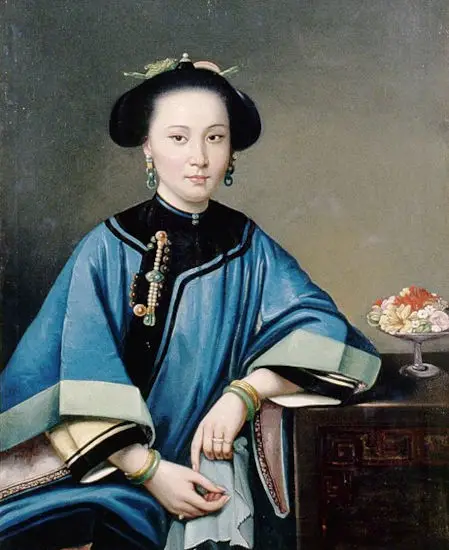
Famous Chinese Concubines Throughout History
Empress Wu Zetian (武則天), AD 624–705
Also known as Consort Wu, Wu Zetian was an influential consort during her time. She was actually the first female Emperor in the history of China.
She entered the Imperial Harem during the times of the Tang Dynasty (618-907 CE) when Emperor Taizong was reigning. She was then picked by Taizong’s son Gaozong, and Wu Zetian became Gaozong’s Empress when he was nominated as the next Emperor.
Emperor Gaozong was weak-willed, so Wu Zetian was actually the main power behind the emperor. When Gaozong died, she proclaimed herself openly as a female Emperor in 690 AD and she reigned until her death in 705 AD.
Wang Zhaojun (王君), Han Dynasty (206 BC – 8 AD)
Famous as First Lady of the Hun Peace, she was renowned as the peacekeeper between Xiongnu, a nomadic tribe in the north of Han, and Imperial Han.
Also known as one of the four beauties of Ancient China, although her main contribution was not her beauty but how she strengthened the ties between the Han dynasty and Xiongnu people.
Related reading: The Most Powerful Women in Ancient China – Opens in new tab
The Last Concubine of China
The modern era of communist China abolished the practice of concubinage, and the last concubine of China was Li Yuqin (末代皇), who was given the rank of Noble Lady during the reign of Emperor Puyi 溥仪, the last Emperor of China.
Li Yuqin became Pu Yi’s fourth wife after the third wife recently died under mysterious circumstances, while Empress Wanrong 婉容, the official wife, was severely addicted to opium.
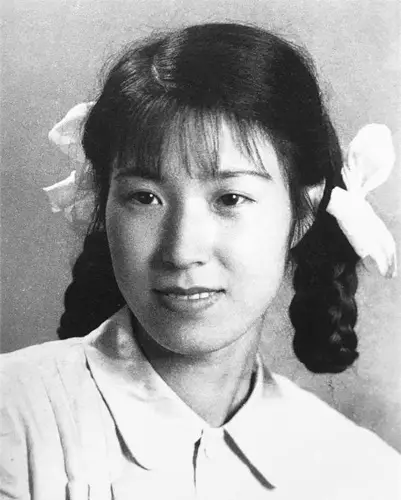

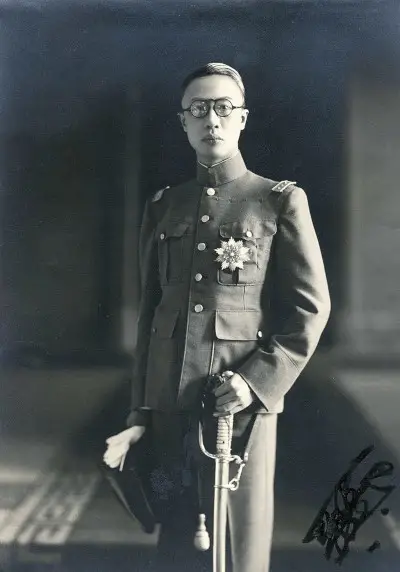
Entering the Forbidden Palace at the age of 15, Li Yuqin entered the puppet imperial Manchukuo under Japan and while she was officially one of Pu Yi’s concubines, Pu Yi never really cared about her fate after the fall of Imperial China.
In 1945, the Manchukuo regime collapsed after the bombings of Hiroshima and Nagasaki forced Japan to surrender at the end of World War II. Li attempted to flee with Pu Yi and Empress Wanrong by train but were intercepted by Soviet forces and sent to prison in Changchun. Wanrong died in prison several months later, but Li was eventually released in 1946 and sent back home. Pu Yi was captured a short time later and remained in prison for 10 years, while Li tried to build a normal life for herself by working in a textile factory and later at a library.
Before her death (in 2001) she admitted that in the 14 years with Pu Yi she never had any good relationship with him. Li finally obtained a divorce in 1957, and she then remarried and had two sons.
End Words
Concubinage in China might seem inhumane by today’s standards, but it is still a very important aspect of Chinese history. During the Qing dynasty (1644-1911) and later on, the status and treatments of concubines improved, and it became permissible to promote a concubine to a wife when the original wife had died and the concubine was the mother of surviving sons.
Also, despite various limitations imposed on concubines, there are actually some cases in history when concubines achieved great influence and power. Modern Chinese law now explicitly prohibits polygamy, although many men broke these rules and started setting up secondary wives, the modern equivalent to concubines in Mainland China.
Related reading: How Chinese Folklore Influences Contemporary Culture and Media – Opens in new tab
Stay in Touch
 Join our newsletter by using the forms on this website or click here!
Join our newsletter by using the forms on this website or click here! Follow us on Google News
Follow us on Google News Follow us on Facebook
Follow us on Facebook
Featured image: “Sorrow of imperial concubine” by gregt99 is licensed under CC BY-NC-SA 2.0

